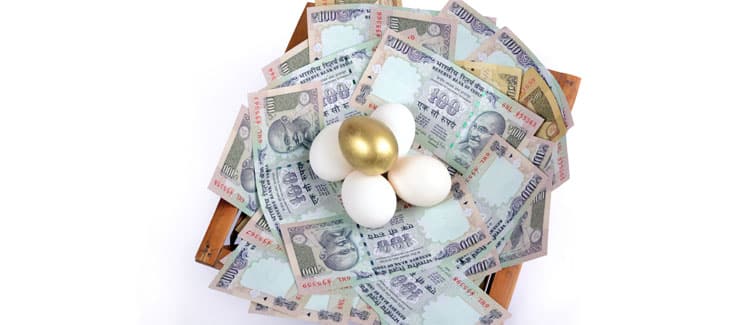Income Tax Calculator
An income tax calculator helps estimate your tax amount based on your income and deductions. It displays results for both the new and old tax regimes, allowing you to quickly determine which option offers greater savings. This tool aids in better financial planning by requiring only a few basic details.
What is an Income Tax Calculator?
Income tax calculators help you easily calculate your tax liability. By inputting your income details and applicable deductions, this calculator accurately estimates your taxes. It is a useful tool for salaried individuals, freelancers, and business owners. An income tax calculator saves time, reduces errors, and provides a clear picture of your tax obligations or potential savings. It enables quick calculation of taxable income and estimation of savings through deductions, rebates, and exemptions. The Policybazaar Income Tax Calculator is updated with the latest income tax changes as per the Union Budget 2025-26 to help estimate tax liability for smarter financial planning.
How to Use Policybazaar’s Income Tax Calculator?
To use the old and new tax regime calculator, follow these simple steps:
- Enter Total Annual Income: Input your total annual income in Indian Rupees (₹) from all sources, such as salary, interest income, rental income, and dividends.
- Enter Deductions: Insert any exemptions and deductions you qualify for in Indian Rupees (₹), excluding standard deductions. Examples include tax benefits under Section 80C, 80CCD, 80D, 80TTA, 10(10D), 80G, and 80E.
- Apply Standard Deduction: The standard deduction under Section 16 of the Income Tax Act, 1961, is exclusively available for salaried individuals.
- Calculate: Click the "CALCULATE" button to compute your tax liability. The income-tax calculator will present your tax liabilities under both the old and new tax regimes.
- Unlock: Provide your basic contact information and click "Unlock" to receive a detailed breakdown of your income tax for both old and new tax regimes, reflecting changes from the latest Union Budget 2025.
Benefits of Using the Online Tax Calculator
Key benefits of using an online income tax calculator include:
- Minimize Taxes: It helps in making informed decisions to reduce your tax burden.
- Boost Financial Health: The tax return calculator allows for effective tax management, leading to better financial planning.
- Choose the Right Tax Regime: It assists in determining the most beneficial tax regime for your specific situation.
How to Calculate the Gross Income of an Individual from Different Sources of Income?
To calculate your income tax online using the Taxable Income Calculator 2025, you must first compute your gross income. Gross income comprises earnings from multiple sources, categorized into five groups for ITR filing:
- Income from Salary: This category includes basic salary, allowances, bonuses, and commissions. Employer-provided benefits like leave encashment or gratuity may also be taxable.
- Income from Business or Profession: This includes profits earned by self-employed professionals, freelancers, or business owners. Eligible expenses such as rent, office supplies, or transportation are deducted from revenue to calculate net income.
- Income from House Property: This includes rental income from owned properties. A standard deduction of 30% is permitted on rental income, with adjustments for municipal taxes.
- Income from Capital Gains: This category includes earnings from selling capital assets like gold or property. It is classified as Short-Term Capital Gains (STCG) or Long-Term Capital Gains (LTCG), with taxation varying based on the asset's holding period.
- Income from Other Sources: Other income sources include interest from savings accounts, fixed deposits, dividends, and gifts. Lottery winnings or income from freelance work may also fall under this category.
Impact of Income Sources on Tax Under New and Old Tax Regimes
All mentioned income sources contribute to your taxable income, increasing your tax liability under both new and old tax regimes:
- Salary Income: The old regime permits exemptions like HRA, while the new regime offers lower rates but no exemptions.
- House Property Income: The old regime provides a home loan interest deduction, which is not available in the new regime.
- Business or Professional Income: The old tax regime offers more deductions, while the new regime simplifies with fewer claims.
- Investment Income: The old regime provides tax benefits for investments, whereas the new regime offers none.
- Capital Gains: Both regimes adhere to the same capital gains tax rules.
Income Tax Calculator for Salaried Employee (Illustration)
There are no fixed rules to determine which tax option is more beneficial for an individual. You should calculate based on your savings and investment portfolio to decide which regime is better for a salaried employee.
Here’s an example for a salaried employee (below 60 years of age) with an income of ₹15,00,000:
Step 1: Calculate Gross Salary: Add your Basic Salary, HRA, Special Allowance, and other components before deductions. Gross Salary: ₹15,00,000.
Step 2: House Rent Allowance Exemption (HRA): If you rent a house, you can claim HRA exemption under Section 10(13A) of the Income Tax Act, 1961, based on your salary, rent paid, and location. The HRA allowance is the lower of:
- Actual HRA received
- 50% of basic salary (for metro cities: Delhi, Mumbai, Chennai, Kolkata) or 40% (for non-metro cities)
- Rent paid minus 10% of basic salary
- HRA with Old Regime With Savings: ₹3,50,000
- HRA with Old Regime Without Savings: ₹0
- HRA with New Regime: ₹0
Step 3: Determine the Gross Total Income from Salary: Deduct HRA and Special Allowance from your gross salary to get the total income under both tax regimes.
- Gross Total Income from Salary under Old Regime With Savings: ₹11,50,000
- Gross Total Income from Salary under Old Regime Without Savings: ₹15,00,000
- Gross Total Income from Salary under New Regime: ₹15,00,000
Step 4: Standard Deduction: All salaried employees can claim a flat deduction from their taxable salary under Section 16(ia).
- Old Regime With Savings: ₹50,000
- Old Regime Without Savings: ₹50,000
- New Regime: ₹75,000
Step 5: Home Loan Interest (Old Regime Only): Deductions are allowed under Section 80EE for home loan interest paid on a residential property.
- Old Regime With Savings: ₹2,00,000
- Old Regime Without Savings: ₹0
- New Regime: ₹0
Step 6: Calculate Gross Total Income: Subtract the interest on housing loans paid under the old and new tax regimes.
- Gross Total Income under Old Regime With Savings: ₹9,00,000
- Gross Total Income under Old Regime Without Savings: ₹14,50,000
- Gross Total Income under New Regime: ₹14,25,000
Step 7: Deduct Section 80C, 80D, and 80CCD(1B) (Only Applicable to Old Regime):
- Section 80C Deduction: ₹1,50,000 (on tax-saving investments like ULIP, PPF, SSY, home loan repayment, and EPF).
- Section 80D Deduction: ₹25,000 (on purchasing health insurance for self, spouse, and children).
- Section 80CCD(1B) (for NPS Self Contribution): Both salaried and self-employed can claim an additional ₹50,000 for NPS contributions under Section 80CCD(1B), beyond the ₹1.5 lakhs deductions.
Step 8: Calculate Taxable Income: Subtract the available investment deductions from your gross total income.
- Old Regime With Savings: ₹6,75,000
- Old Regime Without Savings: ₹14,50,000
- New Regime: ₹14,25,000
Step 9: Calculate Total Taxes for AY 2025-26: Estimate your tax liabilities for both new and old tax regimes based on the tax slabs for your taxable income.
| Particulars | Old Tax Regime with Savings (FY 2025-26) | Old Tax Regime without Savings (FY 2025-26) | New Tax Regime (FY 2025-26) |
| Gross Salary | ₹15,00,000 | ₹15,00,000 | ₹15,00,000 |
| Less: HRA Exemption | (-) ₹3,50,000 | (-) ₹0 | (-) ₹0 |
| Gross Total Income from Salary | ₹11,50,000 | ₹15,00,000 | ₹15,00,000 |
| Less: Standard Deduction | (-) ₹50,000 | (-) ₹50,000 | (-) ₹75,000 |
| Less: Home Loan Interest | (-) ₹2,00,000 | (-) ₹0 | (-) ₹0 |
| Gross Total Income | ₹9,00,000 | ₹14,50,000 | ₹14,25,000 |
| Less: Deductions under Section 80C | (-) ₹1,50,000 | (-) ₹0 | (-) ₹0 |
| Less: Deductions under Section 80D | (-) ₹25,000 | (-) ₹0 | (-) ₹0 |
| Less: Deductions under Section 80CCD (1B) | (-) ₹50,000 | (-) ₹0 | (-) ₹0 |
| Taxable Income | ₹6,75,000 | ₹14,50,000 | ₹14,25,000 |
| Tax Liabilities as per Tax Slab | (0% x ₹2,50,000) + (5% x ₹2,50,000) + (20% x ₹1,75,000) | (0% x ₹2,50,000) + (5% x ₹2,50,000) + (20% x ₹5,00,000) + (30% x ₹4,50,000) | (0% x ₹3,00,000) + (5% x ₹4,00,000) + (10% x ₹3,00,000) + (15% x ₹2,00,000) + (20% x ₹2,25,000) |
| Tax Liabilities | ₹47,500 | ₹2,47,500 | ₹1,25,000 |
| Education Cess @ 4% | ₹1,900 | ₹9,900 | ₹5,000 |
| Total Tax Liabilities (with Education Cess) | ₹49,400 | ₹2,57,400 | ₹1,30,000 |
Step 10: Tax Rebate: You can avail a tax rebate under Section 87A if you meet the specified conditions.
- Old Regime: If your income is up to ₹5,00,000, your tax rebate is the lower of the tax payable on total income or an amount up to ₹12,500.
- New Regime: You get a tax rebate of the lower of the tax payable on total income or an amount up to ₹25,000 if your income is up to ₹7,00,000.
- Old Regime With Savings: Not applicable
- Old Regime Without Savings: Not applicable
- New Regime: Not applicable
Step 11: TDS and Form 16: Your employer deducts TDS from your salary and provides Form 16, which summarizes your overall tax.
Step 12: Filing ITR: To complete the income tax process for a salaried employee, you must file your Income Tax Returns (ITR) by correctly filling out your ITR form and submitting it by the due date (typically July 31st).
Benefits of Income Tax Calculator for ITR Filing
Filing Income Tax Returns (ITR) involves reporting your income, deductions, and tax payments to the government for a financial year. Key benefits of using an income tax calculator for e-filing your ITR include:
- Accurate Tax Calculation: Helps taxpayers determine net taxable income and exact tax liabilities based on income group, tax slab rates, and deductions.
- Planning Savings and Investments: Offers insights into tax-saving opportunities, helping users maximize savings legally.
- Convenience and Accessibility: The online calculator can be used anytime, anywhere, by entering relevant figures for instant results.
- Financial Planning Support: Provides accurate estimates, aiding short-term and long-term investment planning.
- Guidance for FY 2025-26: Useful for taxpayers uncertain about calculating income tax for the latest Financial Year 2025-26 (Assessment Year 2026-27).
Summing Up
An Income Tax Calculator is a quick and easy tool to estimate your tax liability. It helps you compare tax savings under different regimes, plan finances better, and make informed decisions. With just a few inputs, you can avoid complex calculations and efficiently manage your tax obligations.
FAQ's
-
How is 7.5 lakh income tax-free?
As per the Union Budget 2025-26, under the new tax regime, you don't need to pay any tax if your income is up to 7.5 lakhs. However, under the old tax regime for 2023-24, which will continue in 2025-26 as well, individuals with up to ₹3 lakh income are exempt.If your income is between ₹3 lakh and ₹7.5 lakh, you get an additional ₹25,000 rebate under multiple income tax sections.
-
How much tax do I pay on 10 lakhs?
Depends on your chosen tax regime and deductions:- Old regime: Tax could be around ₹1,97,500.
- New regime: Tax could be around ₹2,10,000.
Use an old vs new tax regime calculator for accurate estimates based on your details.
-
How to calculate tax on Rs. 7 lakh income?
In FY 2025-26, an individual with an income of Rs. 7 lakh actually won't pay any income tax under either the new or old tax regime! Here's why:-
New Tax Regime: For individuals with taxable income up to Rs. 7 lakh, the new tax regime offers a full tax rebate under section 87A. This means you owe no taxes at all.
-
Old Tax Regime: While the basic exemption limit is lower at Rs. 2.5 lakh, even under the old regime, you can claim various deductions under section 80C (up to Rs. 1.5 lakh) and other sections, which can easily bring your taxable income below the Rs. 5 lakh threshold for the rebate under section 87A. This again translates to no tax liability.
-
-
How to calculate income tax of Rs. 5,00,000?
how to calculate the income tax for Rs. 5,00,000 under both the old and new tax regimes in India for FY 2023-24:Old Tax Regime:
-
Taxable Income: Rs. 5,00,000
-
Tax Rebate under Section 87A: Rs. 5 lakhs
-
Total income tax payable: 0
New Tax Regime:
-
Standard Deduction: Rs. 50,000
-
Taxable Income: Rs. 5,00,000 - Rs. 50,000 = Rs. 4,50,000
-
Tax Rebate under Section 87A: Rs. 7 lakhs
-
Total payable income tax: 0
-
-
What details should one possess while e-filing ITR (Income Tax Returns)?
One needs to possess the following details in order to e-filing the ITR:-
Details of PAN Card, Aadhaar Card, and Current address
-
Bank account details used during the assessment year
-
Income proof such as income from investment, rent, employment, etc.
-
Details of deduction claimed under section 80 or chapter VI-A of Income Tax Act 1961
-
Details of tax paid in advance, such as TDS.
-
-
Under which section can one claim a deduction on Income tax payable?
One may claim deductions under section 80 and chapter VI-A of the Income Tax Act 1961. -
What sources does an assessee need to include while determining taxable income?
An assessee must include his total salary, house property rent, capital gains, interest on savings, etc. In addition, he should also make a deduction under section 80 of the Income Tax Act 1961. -
How is my income tax calculated?
To calculate your income tax, you will need to first calculate your taxable income. Your taxable income is your gross income minus any deductions and exemptions. Deductions are expenses that you can claim to reduce your taxable income. Exemptions are amounts of income that you are not taxed on.Once you have calculated your taxable income, you can then look up the tax rate for your income bracket. The tax rate is applied to your taxable income to calculate your income tax liability.
˜The insurers/plans mentioned are arranged in order of highest to lowest first year premium (sum of individual single premium and individual non-single premium) offered by Policybazaar’s insurer partners offering life insurance investment plans on our platform, as per ‘first year premium of life insurers as at 31.03.2025 report’ published by IRDAI. Policybazaar does not endorse, rate or recommend any particular insurer or insurance product offered by any insurer. For complete list of insurers in India refer to the IRDAI website www.irdai.gov.in
*All savings are provided by the insurer as per the IRDAI approved insurance plan.
^The tax benefits under Section 80C allow a deduction of up to ₹1.5 lakhs from the taxable income per year and 10(10D) tax benefits are for investments made up to ₹2.5 Lakhs/ year for policies bought after 1 Feb 2021. Tax benefits and savings are subject to changes in tax laws.
¶Long-term capital gains (LTCG) tax (12.5%) is exempted on annual premiums up to 2.5 lacs.
++Source - Google Review Rating available on:- http://bit.ly/3J20bXZ


- SIP Calculator
- Compound Interest Calculator
- NPS Calculator
- Show More Calculator
Explore the popular searches and stay informed
- LIC
- Investment Plan
- Annuity Plan
- Child Plan
- Pension Plan
- ULIP Plan
- Child Investment Plan
- SIP
- LIC Calculator
- SIP Calculator
- SBI SIP
- ULIP Calculator
- Sukanya Samriddhi Yojana
- Best SIP Plans
- Retirement Planning
- SBI SIP Calculator
- HDFC SIP Calculator
- Sukanya Samriddhi Yojana Interest Rate
- NPS Interest Rate
- Deferred Annuity Plans
- SBI Annuity Deposit Scheme Calculator
- Immediate Annuity Plans
- Post Office Child Plan
- Prime Minister Schemes For Boy Child
- Government Schemes for Girl Child
- 50k Pension Per Month
- Atal Pension Yojana Calculator
- Best Pension Plan in India
- CIBIL Score
- 1 Crore Term Insurance
- Best Term Insurance Plan
- Term Insurance for Women
- Term Insurance for NRI
- Term Insurance
- Term Insurance Calculator
- Life Insurance
- Term Insurance with Return of Premium
- Whole Life Insurance
- Term Insurance vs Life Insurance
- What is Term Insurance
- Life Insurance Calculator
- 5 Crore Term Insurance
- 2 Crore Term Insurance
- 50 Lakh Term Insurance
- Term Insurance for Housewife
- Benefits of Term Insurance
- Term Insurance Terminology
- Medical Tests for Term Insurance
- Term Insurance for Self Employed
- Claim Settlement Ratio
- 10 Crore Term Insurance
- Term Insurance for Smokers
- 1.5 Crore Term Insurance
- Zero Cost Term Insurance
- FIRE Calculator
















